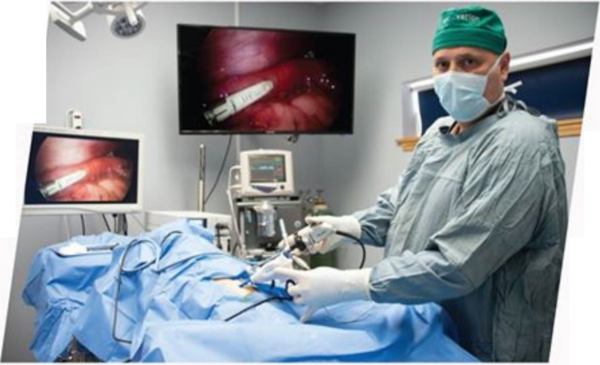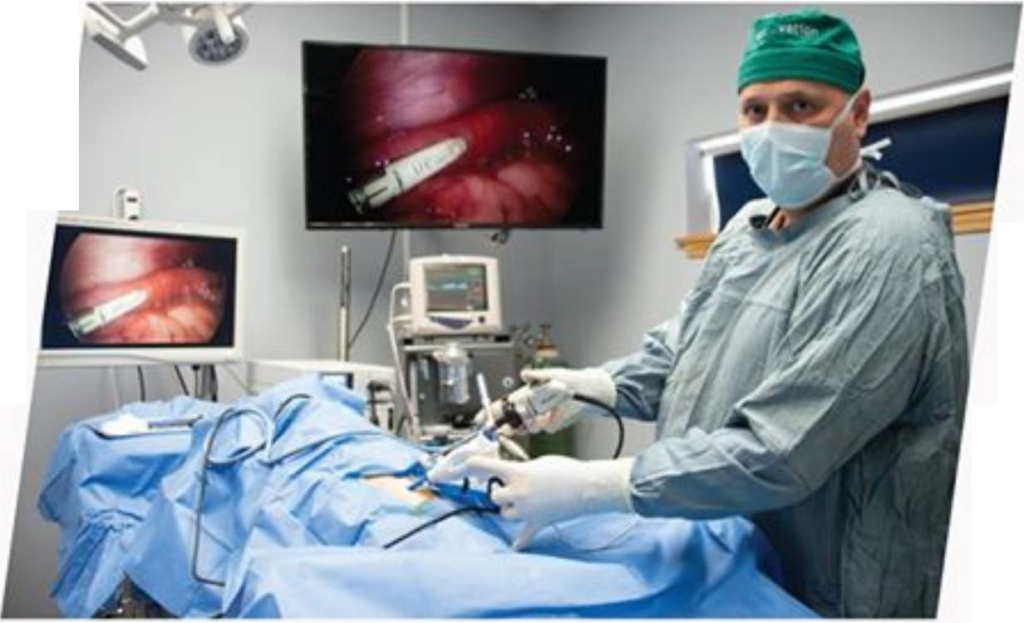Articles & Product Documents, Veterinary Articles
Patterson Today Article-Minimally Invasive Surgery Offers Big Benefits
If you need to print this PDF or save for later
click below to download your copy.
MINIMALLY INVASIVE VETERINARY SURGERY OFFERS BIG BENEFITS
Chances are most of us will experience some type of minimally invasive surgery such as a gallbladder removal or knee scope. And the reasons are clear. Instead of making large Incisions that increase recovery time and the chance for infection, minimally invasive surgery reduces postoperative complications and enables the patient to return to normal activity more quickly.
As minimally invasive surgery has become the standard of care in human health care for the past 30 years, more and more pet owners are expecting this same option for their pets.
EQUIPMENT BECOMES AN EXTENSION OF YOUR EYES AND HANDS
Scopes and small instruments are the key component of minimally invasive surgery. The scopes become an extension of your eyes – magnifying images 30 times – so you can clearly view anatomy inside a patient.
“Veterinarians see a lot of different animals – little dogs, big dogs, cats, rabbits, horses – and they need to see inside a lot of different spaces,’ said Les Meadowcroft, president and CEO of VetOvalion, manufacturer of veterinary laparoscopy and endoscopy veterinary equipment that is exclusively distributed by Patterson Veterinary. “Scopes help them improve their visualization,” he said.
A series of small instruments become an extension of your hands to gently grasp and cut tissue inside patients in a minimally invasive fashion,
LESS IMPACT EQUALS FASTER RECOVERY
By offering minimally invasive surgery for their patients, veterinarians have the ability to perform surgery with smaller incisions, resulting In less pain and blood loss and an overall quicker recovery.
“If I were a surgeon taking out your gallbladder. I’d tell you to not lift heavy objects, don’t chase the kids, don’t lick your incision, don’t jump up and down or roll In the mud.” Meadowcroft said. “As a good patient, you’ll probably comply with 50 percent of that. But if the patient is a dog, that’s a different story.
“However, if the dog has had minimally invasive surgery, it can typically go home faster and resume its regular routine a lot quicker.” Meadowcroft said.
In addition to reduced recovery time, there’s also the benefit of lower infection rates because smaller incisions heal more quickly, lessening the chance for a patient to lick the wound with a mouthful of bacteria.
CONTINUED ACCEPTANCE
More and more veterinary hospitals are making minimally invasive surgery the standard of care for spay, gastropexy and liver biopsy along with many other common veterinary procedures.
According to Meadowcroft, about five to 10 percent of veterinary practices in the U.S. have adopted minimally invasive surgery as their standard of care, and this number is rapidly growing.
“Clients understand the benefits of this type of care and will call around to see who does surgery in a minimally Invasive fashion because they want the best for their pet and are willing to pay for it.’ Meadowcroft said. “By adopting this technology, practices can differentiate themselves from their competition – attracting new clients and increasing compliance of current clients.”
Erik Strunck. DVM, at Grace Park Animal Hospital in Morrisville. North Carolina, said they brought this technology to their practice about six years ago. They started with spaying and then added cystectomies and liver biopsies. “The ability for quick sedation and a small incision enabled us to increase liver biopsy acceptance because it made it much easier to convince pet owners who were hesitant of having their sick pet undergo a big surgery for testing.” Strunck said.
Now their most common types of minimally invasive surgeries are spaying female dogs and cats, gastropexies and liver biopsies. Strunck says patients seem to be In less pain when they wake up because of the smaller incisions, and they seem to bounce back faster than with the standard technique.
“Pet owners love that we offer this.” he said. ‘I expect more and more clients will seek out practices that offer minimally invasive surgery. Pets are family and clients want to do anything they can to make sure their pet’s surgery is as easy as possible. We are glad we added this to our practice and would do it again if we had that choice.” Strunck said.
HANDS-ON TRAINING
Available exclusively through Patterson. VetOvatlon offers three levels of equipment. The most basic is a scope for an iPhone that Is used to look inside a nose or ear. The second Is a gastroscope. which is used to look down the esophagus and into the stomach to remove foreign objects or take a biopsy. Third, is laparoscopic or minimally invasive surgery equipment.
To help hospitals adopt this technology, in-hospital training is included in the purchase of the equipment, except for the iPhone scope as It Is similar to using a phone and is easy to use.
Trainings typically take place over two days. The training team will work with a local animal rescue organization to laparoscopically spay a dog at the hospital. “Doctors receive thorough, hands-on training right in their own hospital,” said Meadowcroft.
Contact your Patterson territory manager to learn more about how you can bring this service to your practice PT and how our range of veterinary surgical supplies can benefit your veterinary office.
